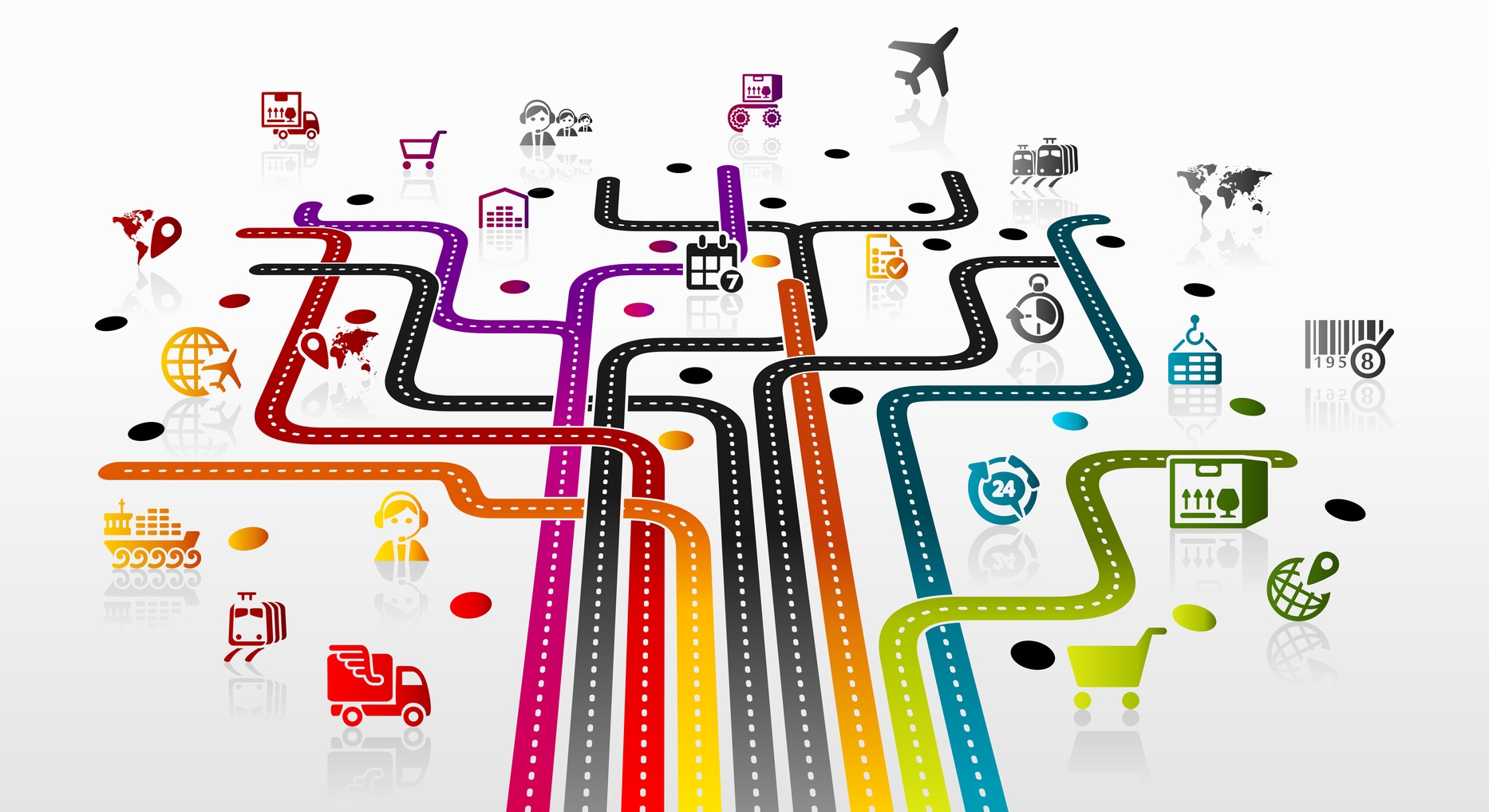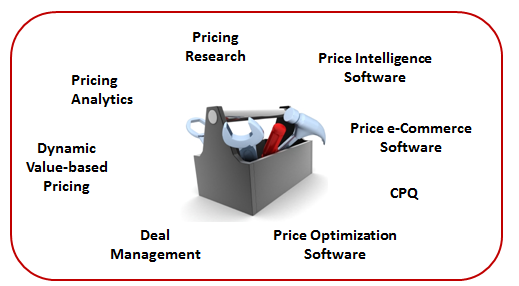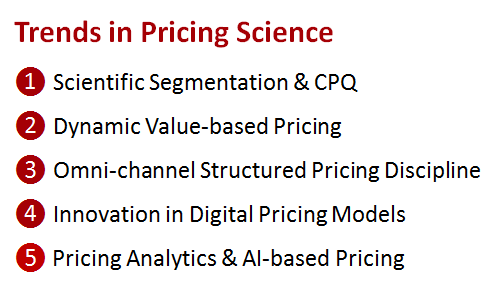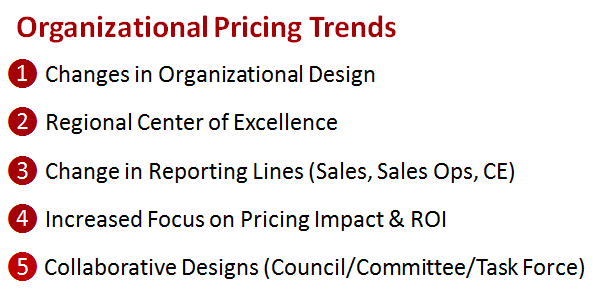
As I outlined in previous posts, everything is going digital and there are certain steps you can take to get your organization ready for transformation. But what does digitalization mean for your pricing function specifically?
Generally, digitalization means better science across the board. Some functions have been revolutionized by scientific and technological advances. The field of pricing has been doing advanced analytics and optimization for three decades now. The use of statistical models, regression analysis, and algorithms started when pricing was embedded in the economics function back in the 1970’s. What’s changed more recently is the emergence of new tools and the application of science in other domains related to pricing: deal management, segmentation, and CPQ. So, in a way, other functions are catching up to pricing through digitalization.
Implications for Pricing Science
Your digitalization roadmap for pricing over time should include some of the components below.

There are many benefits to using these tools. Besides the demonstrated impact to the bottom line, they also integrate well with other digital tools such as ERP, CRM, and marketing automation for example. This integration is essential to make the entire system work and for adding a capture-focused component to marketing and sales transformations.
Pricing digitalization is forcing much more coordination and integration with the marketing and sales digitalization process. Digitalization is moving trends at the periphery of marketing and sales as shown in the trends table below.

Segmentation is typically a marketing activity but today, it’s now also bridging pricing and sales. E-commerce and omni-channel business models have connected channel strategies, pricing, and sales. Finally, innovations in pricing models is linking the fields of innovation, business models, and pricing. In this way, digitalization is connecting functions and breaking down silos.
Implications for Pricing Organization
The mega trends I discussed in my first blog of this series have forced changes in organizational design and structure for pricing. Over the past two years, we have witnessed a wave of pricing decentralization efforts with more progressive pricing champions moving away from centralized structured to regionally-based decision centers. We see the emergence of regional centers of excellence which can respond faster to changing market dynamics such as local competition, changes in currency, and changes in customer preferences.
Digitalization and economic mega trends are changing the way pricing is done and organized. More advances in tools and software are also going to replace some of the human interventions in pricing analytics and optimization. It changes roles and responsibilities for pricing professionals.

Implications for Pricing Professionals
The race for greater investments in pricing and the increased competition among all business functions make it necessary to learn how to justify invesments in pricing science and training. As every function conducts its digitalization efforts, ROI and payback remain the primary deciding factor in a constrained world. All digital projects cannot be financed at once.
I am not worried about the technical side of pricing. It will take of itself as the business world is digitalizing more and more, and progress is made in big data analytics, AI and machine learning. The future of the pricing function is moving towards more developments on the softer side of pricing. As machine and software do more and more, the time of pricing experts will be better spent convincing, influencing, motivating, coaching, and leading.

What does that mean in concrete terms? It means that pricing professionals will have to balance their pricing skills with some of the soft skills listed in the figure above. More of pricing is going to be about coordinating, managing change, creating story out of data, leading with charisma, etc. Machines and humans will complement each other extremelly well as more digitalization takes place in pricing management. The future of pricing is bright. Be bold. Join the pricing revolution!
If you’re considering a price optimization tool to bolster your organizational pricing, get the IDC Price Optimization Vendor Assessment.
